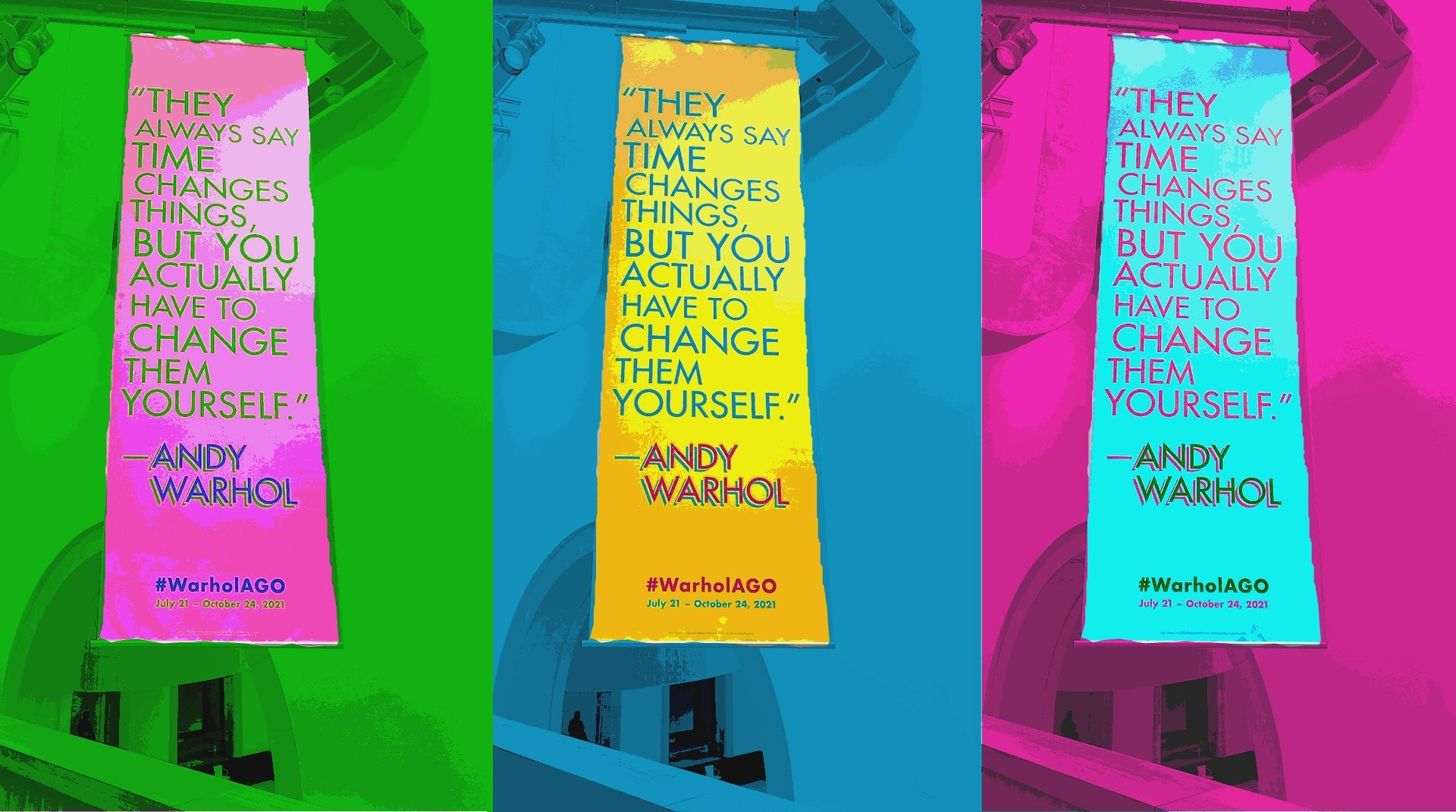Andy Warhol, a reserved and creative individual, came from an Eastern European working-class background. He explored his sexual identity, American culture, and materialism through his intricate artwork. From painting, photography, screen printing, printmaking, to creating transforming installations, Warhol created art that “fueled the intense cultural transformations that occurred across the globe in the second half of the twentieth century,” as stated on the Art Gallery of Ontario’s (AGO) website.
Warhol became the most prosperous and highly paid promotional artist in New York long before he created work that was actually meant for galleries. He dominated pop culture with his infamous soup cans and screen-printed pieces of celebrities such as Marylin Monroe and Mick Jagger.
The Andy Warhol exhibition at the AGO displays pieces created all throughout Warhol’s career. These pop culture creations include “Marilyn Diptych,” ”100 Campbell’s Soup Cans,” and ”Elvis I and II.”
In the exhibition, there are also extremely captivating installments: “Exploding Plastic Inevitable,” a dimly lit room with disco balls, red and blue lights, along with the music from The Velvet Underground and erotic forecastings of videos playing; and “Silver Clouds,” with large, silver, pillow shaped balloons roaming freely in a brightly lit space.
The exhibition felt lively, with bright colours everywhere and every corner displaying a different time period of Warhol’s life.
I was witnessing the original pieces: prolific creations that have circulated so thoroughly throughout society, discussed in schools, and displayed on social media.The soup cans and the images of Marylin Monroe have become so common in contemporary society, yet seeing the original pieces right before me felt enchanting.
The exhibit did not overshadow the fact that Warhol struggled throughout his life, not only financially, but also with his sexuality, which contradicted his religious beliefs. He also came from a working-class family and was self-conscious about his physical appearance.
The set-up of the exhibition displays his creative, vibrant personality, along with the parts of himself that struggled during the darkest times of his life. Warhol was known to be shy, but he expressed himself through his work.
All of this colourful artwork surrounds the “Exploding Plastic Inevitable.” The colours outside completely contradicted the colours and the aura inside this room — it felt like a shift between realities, with one radiating vibrancy contrasted with the gloomy and frenzied.
He influenced modern art by redefining what “art” even is. When we think of art, often mental images of intricate paintings, colossal sculptors, or photographs capturing natural scenery form.
By using items such as soup cans, cantaloupes, bananas and brillo boxes, he brought forth the concept of consumerism further into American society by using everyday, habitual items. By illustrating such mundane objects, he symbolized the substantial consumerism during those times.
His personal concept of fame, Hollywood, and celebrity culture inspired him to embrace an artistic approach that displayed these things to society. He became a leading figure in pop culture with his famous faces recreated with bright colours and edgy methods.
Warhol urged modern artists to break out of the restrictions of what is and is not art; calling for artistic freedom, he created pieces in which identity, personal style, and unique thoughts are at the forefront.


